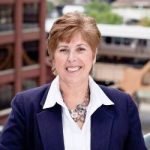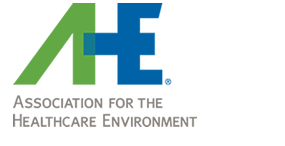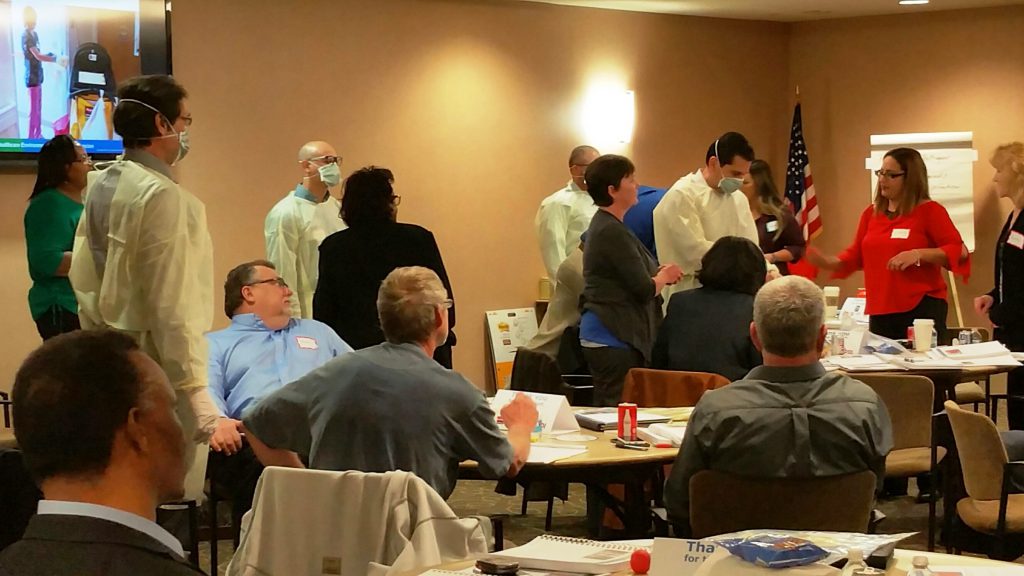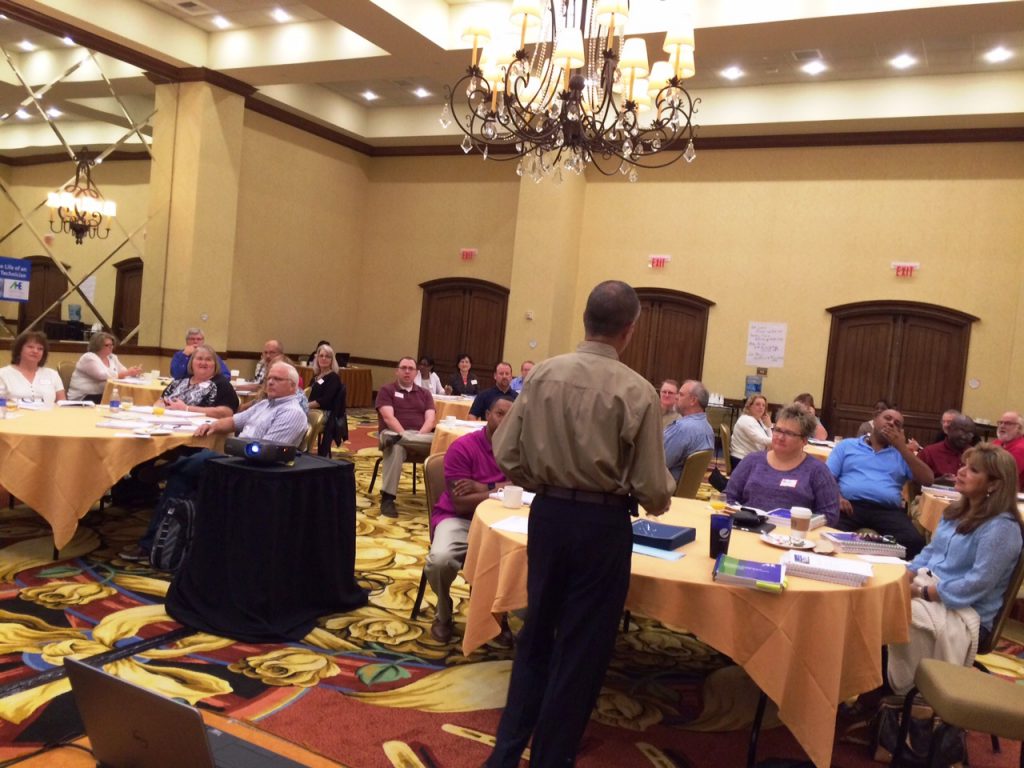Personal Relationships and Big Goals Keep AHE’s Sponsorship and Education Programs Healthy

How do you grow third-party partnerships and revenue in an industry that is continually growing in relevance but shrinking your traditional membership pool at the same time? We spoke with Patti Costello, M-CHEST, executive director of the Association for the Healthcare Environment, about the stunning growth in corporate sponsorships AHE has enjoyed during the past 15 years and how revenue from their partners enables AHE to provide comprehensive, leading-edge educational programs for members of all subfields and career stages. Costello’s need to be personally involved with corporate partners and to continually focus on potential areas for membership growth has positioned AHE to strongly represent healthcare facilities’ interests for years to come.
Association Adviser: Patti, you’ve been the executive director of AHE since December 2000. What route did you take to this position?
Patti Costello: I’ve taken somewhat of a circuitous route. My educational interests have always been science. I studied nursing in college, though I never became a practicing RN. After leaving college I went back into food service, the field that funded my education, and discovered I didn’t really want to be a nurse. But I also didn’t know what to do with myself. I ultimately ended up getting management jobs in fine dining and catering before becoming involved in the Taste of Chicago (TOC), which at the time was the second-largest outdoor food festival in the world, second only to Munich’s Oktoberfest. At TOC, a fellow hospitality professional convinced me to take a job with a hospitality association. That was my entry into the association community.
Because I had young children at that point, I worked part time from home before withdrawing from the workforce completely for a bit. Being home with my toddlers was my priority. However, about a year later a recruiter called on behalf of the American Hospital Association asking me to interview for a job as an education director for one of their business units. I thought, what do I have to lose? I should stay current with my interviewing skills, because who knows when I’ll want (or need) to go back into the workforce?
I was offered the job, accepted it and hired full-time help to take care of my children. I worked my way up the ladder and when the executive director moved on, I was offered the position.
I love working for AHE because our members are wonderful. They are the salt of the earth, gracious and humble, and do such important work with little recognition. They make my job fulfilling.
AA: Tell us about AHE’s sponsorship program. You helped grow the revenue it brings in by 350 percent in three years. That’s huge! How did you do it?
 PC: When examining AHE’s conference sponsorship program shortly after I became executive director, I learned that the only time there was meaningful staff engagement with current or potential sponsors was when we asked for money. A strategic relationship with these companies was lacking.
PC: When examining AHE’s conference sponsorship program shortly after I became executive director, I learned that the only time there was meaningful staff engagement with current or potential sponsors was when we asked for money. A strategic relationship with these companies was lacking.
So I spent a lot of time in our annual conference’s exhibit hall learning about our exhibiting companies and their people. The AHE team made sure AHE met their exhibiting needs and I made sure our board members engaged them personally and strategically. We began in small ways. For example, we hand-delivered to each exhibitor a hand-signed thank you note signed by each board member to thank them for their support. That was 16 years ago and we continue to do so today. It’s amazing how much such a small gesture means. I guess the lost art of hand-signed notes really is appreciated. So engagement, whatever that means to your organization, is key.
Shortly after that practice was instituted, I got a call from a VP of marketing from an exhibitor requesting an in-person meeting to discuss sponsorship opportunities. Through our conversation, we developed the Corporate Champion Program, which offers healthcare suppliers strategic, year-round, customized sponsor benefits based on required minimum sponsorship levels.
One such benefit is AHE’s annual healthcare environment trend data survey. This survey grew out of an older focus group benefit we offered to high-level sponsors at our annual conference. Sponsors had to coordinate the focus groups, but AHE provided the room and a list of potential participants they could contact from our attendee list. This benefit became so popular that as our sponsor list grew, we ran into the problem of diverting attendees away from conference activities.
So it was back to the drawing board to develop a lasting benefit that would be just as impactful but more efficiently executed. We contracted with a market research firm to collect data about the healthcare environment: what’s going on in the field, facilities’ buying strategies, employee habits with use of products, where our members see the field going, and what could potentially impact product use in the future. We also engage in strategic discussions, to explore the intersecting points of what we need and what they need. These exchanges are covered by non-disclosure agreements so there is a level of trust built between AHE and the sponsors.
The trend data survey is the main component of our annual market research program. Corporate champion sponsors provide us with questions about product lines and product or service needs that they want insight into for the survey. We promote the survey to members requesting they provide the data as a thank you to our sponsors. We’ve been told that while AHE offers tremendous value to sponsors, the data set alone is worth the cost of sponsorship.
AA: What other benefits do your sponsors receive?
PC: Effective partnerships are about developing relationships. I stay personally involved in each sponsor discussion. From a corporate perspective, companies really want to hear from the person in the top chair. So I make a point to be involved in the conversation and to match my level of commitment to theirs without crossing boundaries. We also provide customized benefits based on their strategic need and what we can deliver. If the ask exceeds the sponsored amount, something gets cut or they provide additional funding. It’s about demonstrating the value of what we can provide without selling out. But really, the relationships developed over time as did the trust.
About 14 years ago, the board created an industry liaison position where an industry professional can apply for a board position. The seat is not at all tied to sponsors or companies nor does the criteria consider sponsorship engagement. The industry person is vetted in the same fashion as other board members and selected based on the same criteria as other at-large board members. The inclusiveness and feeling like a contributing member to the organization goes a long way in our industry as a whole. They have representation in the long-term strategic vision of the association, and this builds loyalty. This loyalty can get an association through tough times and provides insights from a very different perspective.
AA: We see that one partner, Orkin Pest Control, offers their gold customers a complimentary AHE membership. How does that work?
PC: Orkin established that program on their own. Basically, as long as a professional in our field is an Orkin Gold Medal customer, Orkin will fund the AHE membership for that client. They recognize the value AHE provides to healthcare professionals and the value we bring to them as a company. It’s a win-win. It’s not an endorsement – we don’t do endorsements – but it’s a great example of how to work in a mutually beneficial way. The program started about eight years ago and continues today.
AA: How do these sponsorship dollars translate into membership benefits?
PC: AHE offers complimentary education to all members. This education includes 25 podcasts, nine webinars and nine online courses. The online courses are college-level courses. It is a very robust portfolio that is included in the cost of membership.

We also offer fee-for-service Signature programs that are live. One is a train-the-trainer program and the other is a certificate of mastery with a capstone project. We researched what specific needs our members have and what they wanted to improve their career path, and certificate programs and certifications were the big ask. A significant amount of educational material – videos, podcasts and whitepapers – are free on the internet. Our members work for organizations that are no different than other businesses trying to efficiently work their budgets, so we decided not to spend a lot of money on those types of offerings.
Instead, we took a risk and invested significant corporate dollars in our Signature programs. Doing so has generated long-term loyalty from members and a lot of new members from unlikely places – non-directors, non-managers, people who work in disciplines tangential to healthcare but who want to learn more about operating an efficient healthcare facility.
Being more inclusive than exclusive is better for everyone, so when we saw these non-traditional healthcare markets taking our courses, we created a membership type for them, started allowing them to serve on committees, and we’ll soon allow those members to hold office and vote in our association. We’re all about patient safety, quality outcomes and the lowest patient cost – everyone has the same job – so why not let everyone involved in delivering care have a seat at the table to ensure outcomes? Having different perspectives adds to the diversity without diluting who the core members are or losing governance control of the organization. All those association details were worked out in advance. As a result, we expect to see significant growth in the community.
AA: How do you deliver this education?
PC: The Signature programs are delivered live, in person, four times per year in cities across the country. They are so successful that we are developing and delivering two more this year.
Our online programs – videos, podcasts, and online courses – are delivered online, of course, and are complimentary for members and fee-based for non-members. We plan to host our podcasts on iTunes and Google Play shortly, and those will become free to everyone for download. We want to use the tools that people use every day.
AA: That is a large amount of educational programs. How do you finance their creation and execution?
PC: We have a competitive membership rate, and competitive rates for online courses and webinars. But amidst all the data we collect about membership satisfaction was the repeated fact that the money well was going dry. A lot of facilities could not afford memberships for all their senior-level employees, and because of mergers and acquisitions, education, travel and membership budgets were being cut. Healthcare facilities are no different than any other business that is looking to be more efficient with their budget.
So we said, let’s look at our education costs and see if we can’t roll some of it into the cost of membership. We raised dues by $50 and included online, webinar and audio programs in the standard membership benefits menu. Once educational programs are developed, there are really no more direct costs beyond operation and maintenance of the registration system that integrates with our membership system. So the bulk of our education costs are one-time. We rarely deliver live webinars so prerecording cuts our costs by 60-80 percent. We provide registrants with the opportunity to ask questions via an education email address so they don’t feel they don’t have access to the speakers.

Our Corporate Champion revenues cover most of our educational program costs. We make it clear to those sponsors that their dollars will be divested into our educational programs or our area of greatest need.
In addition, we record and upload 15-minute “express” videos to our website. There’s not a lot of cost to that. There is some staff time to develop program outlines but we’d bear that expense no matter what the educational channel is because we want to bring these programs to life.
AA: How many members take advantage of your educational offerings?
PC: Probably 65 percent. Some online courses are self-directed and on-demand, but many are facilitated, and our enrollees who take an AHE course in parallel with coursework they are taking through an accredited college or university tell us that our courses are as good as or better than those offered through their school. We pride ourselves on offering courses with a curriculum, depth, and amount of interaction that is just as comprehensive and valuable as a full-fledged university.
AA: How do you keep your educational offerings competitive with institutions like that?
PC: We strive to offer more interactivity and a wide variety of cutting-edge media channels through which our members can access education. Three of our seven staff members are dedicated to developing and executing our educational programs, and they focus on keeping us on the cutting edge of learning technology. If there’s a way to use new or alternate media, we’ll try it. I anticipate this aspect of our membership benefits to continue growing. The days of a talking head and a slide show are about gone.
AA: What keeps you up at night?
PC: That we face a potentially dwindling pool of members. When you look at the mergers, acquisitions and partnerships happening with healthcare organizations, you have fewer people receiving titles like “system director.” These are the people who would have been members in the past, but now, instead of many of these types of people overseeing one or two facilities, they’re now fewer in number and in charge of five or six facilities. They may have dozens of managers below them, but the lower on the career ladder you go the less apt you are to afford memberships and programs.
So I’m always looking for where our next non-traditional member will come from. Who in the healthcare environment might have an interest in AHE membership? When we peel back the layers of healthcare, there’s a lot of work our members oversee. The more we know about their work, the better. Nurses and doctors obviously have a vested interest, but others do as well. Clean, safe, quality healthcare can’t be delivered by a nurse or doctor alone. Other team members, like cleaning technicians or laundry workers are important, too. So we’re always looking at non-traditional membership bases and then striving to provide the benefits they want and need.
For example, right now we’re working on a healthcare certificate program for college students in conjunction with the hospitality program at The Ohio State University’s College of Education and Human Ecology. Students will have an option to attend courses with the goal of receiving a certificate in healthcare environmental services. Assuming this program goes well, we want to expand it to other universities and colleges. AHE’s dream is to one day develop a full baccalaureate program in healthcare environmental services. Either way, we want and need to keep the professional pipeline new and fresh with young talent.
This is just one way we stay out front and make sure our membership can sustain revenue and membership growth. But I have to say, AHE is so blessed to have the team it has. We are committed and fully understand the needs of our members. It’s not just a job, it’s a passion. So we are always thinking about new and innovative ways to keep it fresh and sometimes a bit sassy. Otherwise, I sleep like a baby!
Patti Costello, M-CHEST, has served as the executive director of the Association for the Healthcare Environment since 2000, where she leads the development of the strategic plan with a seven-member board, directs budget and programmatic development, and cultivates opportunities to align strategic and operational activities to the overall enterprise AHA strategy. You can reach her at [email protected].

